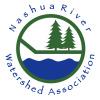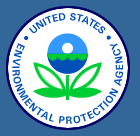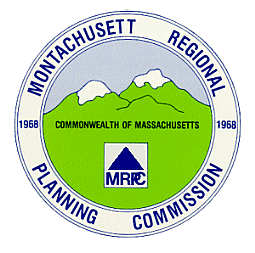|
Who
We Are
 |
The
Massachusetts Watershed Initiative (MWI) was a broad
partnership of state and federal agencies, watershed
associations, businesses, municipal officials and individuals
who work together to improve the quality of the river
corridors, drinking water, wetlands, wildlife, and other
natural resources in the Commonwealth’s 27 major
watersheds. The MWI was started in 1994 and eliminated
in 2003. |
 |
The MWI Nashua
River Watershed Team worked closely with municipalities,
land trusts, citizens, and businesses. It was led by
JoAnne Carr and included representatives from the following
organizations and agencies (some of which have changed
their names since 2003). |
 |
Nashua River Watershed
Association: Founded in 1969, the NRWA is a nonprofit
organization dedicated to the protection of the watershed’s
natural resources. The NRWA serves as an educator, advocate,
steward, and technical resource. The NRWA conducts a
volunteer water quality monitoring program, facilitates
the permanent protection of priority lands, and provides
resource-based planning tools through the Bill Farnsworth
Conservation Clearinghouse at the River Resource Center.
The Association also offers watershed education for
adults and youth, including an on-water River Classroom
program. Team Contact: Elizabeth Ainsley Campbell, (978)
448-0299 (Groton),
www.NashuaRiverWatershed.org.
|
 |
Massachusetts Department
of Environmental Protection: The state’s largest
environmental agency, DEP is responsible for regulating
clean air and water; the safe management and cleanup
of solid and hazardous waste; and the protection of
water resources. DEP’s Bureau of Resource Protection
includes regional specialists in drinking water, wastewater,
wetlands, and municipal assistance. A separate unit,
the Division of Watershed Management, oversees water
quality monitoring, NPDES permitting, the 303d list,
and the development of five-year assessment reports
for each major watershed in the Commonwealth. Team Contacts:
Warren Kimball, (508) 767-2879 (BRP-CERO, Worcester),
and Rick Dunn (508) 767-2874 (BRP-DWM, Worcester),
www.state.ma.us/dep
.
|
 |
Metropolitan District
Commission: The MDC was created in 1893 to oversee
the Metropolitan Park System. It now maintains more
than 19,000 acres of woodlands, wetlands, and urban
parklands in eastern Massachusetts, and a 120,000-acre
watershed and reservoir system that includes Wachusett
Watershed in the Nashua River Basin. Managed jointly
with the Massachusetts Water Resources Authority, this
MDC water system provides consumers with more than 100
billion gallons of water annually. Team Contact: Pat
Austin, (508) 792-7423 x204 (West Boylston),
www.state.ma.us/mdc
|
 |
Massachusetts Department
of Fisheries, Wildlife, and Environmental Law Enforcement:
DFWELE is responsible for managing Massachusetts’
wildlife species and marine and freshwater fisheries.
It is also home to the Riverways Program, which provides
community assistance for river corridor protection.
In addition, DFWELE is responsible for protecting rare
and endangered species and for enforcing state laws
related to fishing, hunting, boating, recreational vehicles,
and illegal dumping. Team Contact: Cindy Delpapa, (617)
626-1545 (Boston),
www.state.ma.us/dfwele.
|
 |
Massachusetts Department
of Environmental Management: Best known for its
management of the Commonwealth’s state parks and
forests, DEM also houses the state’s Office of
Water Resources. This office collects and analyzes data
on precipitation, groundwater levels, and streamflow
in order to establish minimum streamflow thresholds
below which future water withdrawals would be prohibited.
DEM is also active in greenways planning and waterfront
protection. Team Contact: Linda Marler, (617) 626-1384
(Boston), www.state.ma.us/dem.
|
 |
U.S. Environmental Protection
Agency: EPA is the federal agency responsible for
protecting public health and safeguarding and improving
the natural environment -- air, water, and land -- by
implementing and enforcing the Clean Water Act, the
Safe Drinking Water Act, and other national legislation.
EPA’s New England Office works closely with state
agencies to develop statewide and place-specific environmental
goals and strategies. Team Contact: Mary Jo Feuerbach,
(617) 918-1578 (Boston), www.epa.gov. |
 |
Montachusett Regional
Planning Commission: As the regional planning agency
serving the largest number of communities in the Nashua
River Basin, MRPC has prepared a Regional Growth Plan
for its 15 cities and towns in the watershed: Ashburnham,
Ashby, Ayer, Clinton, Fitchburg, Gardner, Groton, Harvard,
Lancaster, Leominster, Lunenburg, Shirley, Sterling,
Townsend, and Westminster. The plan addresses the effects
of growth on these communities and recommend tools to
properly manage growth with an emphasis on protection
of the watershed’s natural resources. Team Contact:
Amanda Amory, (978) 345-7376 x2206 (Fitchburg),
www.mrpc.org. |
 |
Central Massachusetts
Regional Planning Commission: One of 13 regional
planning agencies in Massachusetts, CMRPC provides planning
services to 40 communities in Worcester County, including
four towns in the Nashua River Basin: Boylston, Holden,
Princeton, and West Boylston. CMRPC assists these communities
on issues of regional growth, transportation planning,
land use planning, economic development, cartography,
and grants management. Team Contact: Bill Scanlan, (508)
756-7717 (Worcester),
www.cmrpc.org |
 |
Massachusetts Water Resources
Authority: Best known for its clean up of Boston
Harbor, the MWRA was established as an independent authority
by the Massachusetts Legislature in 1984. Its mission
is to deliver water and wastewater services to 61 cities
and towns with a combined population of 2.5 million.
The MWRA assists the MDC in protecting water quality
in the Quabbin, Ware, and Wachusett watersheds to ensure
a safe drinking water supply. The MWRA is also responsible
for updating and building new facilities required by
federal environmental mandates. Team Contact: Pam Heidell,
(617) 788-1102 (Boston) www.mwra.com. |
 |
Natural Resources Conservation
Service: Formerly the Soil Conservation Service,
this office within the U.S. Department of Agriculture
serves as the nation’s technical agency dedicated
to the wise use of soil, water, and related resources.
Through 16 locally organized and operated conservation
districts in Massachusetts, NRCS provides technical
assistance to individuals, groups, organizations, and
units of government in conserving and managing their
natural resources. Team Contact: Ron Thompson, (508)
829-4477 x3 (Holden), www.nrcs.usda.gov/programs. |
 |
Office of Technical Assistance
for Toxics Use Reduction: A nonregulatory agency
within EOEA, OTA provides manufacturers of all sizes
with free, confidential assistance on opportunities
to reduce the use of toxic materials or generation of
toxic byproducts. In addition to protecting public health
and the environment, a toxics use reduction strategy
strengthens Massachusetts businesses by improving process
efficiency and by lowering the costs and liabilities
associated with toxic material use. Team Contact: Marina
Gayl, (617) 626-1077 (Boston), www.state.ma.us/ota. |
 |
Massachusetts Department
of Food and Agriculture: DFA promotes and enhances
the long-term viability of agriculture in Massachusetts.
Among its areas of responsibility, DFA administers the
Agricultural Preservation Restriction Program, which
has protected more than 40,000 acres of prime farmland
in Massachusetts, including 2,588 acres in the Nashua
River Basin. DFA also regulates the use of pesticides
and works with farmers to improve markets for their
products. Team Contact: Bill Blanchard, (617) 626-1709
(Boston), www.massgrown.org. |
 |
The MWI Nashua Team is also
working with stakeholders in the Nashua River Basin’s
seven New Hampshire communities. |
back
to top
Making
Connections
The MWI Nashua River Team connected
with each of the municipalities, the many local land trusts
and other conservation groups, numerous businesses, and
interested individuals across the watershed through a variety
of ways. The Nashua River Watershed Association's "Communities
Connected by Water" program, funded in part through
EOEA, enabled the Association and the Nashua River Team
to broaden awareness of the Massachusetts Watershed Initiative
and increase involvement in Team projects. Four examples
include:
- Fitchburg Stream Team, providing local stewardship of
the North Nashua River; Shoreline Surveys conducted by
groups in other municipalities
- Volunteer Water Quality Monitors, sampling 35 sites
in the watershed
- Conservation Commission gatherings to promote cross-boundaries
dialogue
- Nashua River Watershed Regional Land Trust Alliance
gatherings to promote shared efforts among for over a
dozen local and regional land trusts
Public meetings in each of the four main sub-basins, Open
Houses, News
Releases, Surveys, and E-Mail notices have all helped watershed
stakeholders stay in touch with the Team. Additionally,
over the last few years the Association has held close to
four dozen watershed education sessions or workshop to support
the Team's goals and increase active participation. The
wide range of topics include:
"How to Conduct an Ecological and Habitat Inventory"
with Jeff Collins
"Lakes and Ponds" with Jim Straub and Carol
Hildreth
"Limited Development" with Jed Mannis and Peter
Creighton
"Rare Plants" with Paul Somers
"Smart Growth" with Allison Walsh
"Stormwater" with Nancy Reed
back
to top
Team
Accomplishments Over the Past Five Years (1998-2003)
The Massachusetts Watershed Initiative
Nashua Team brought state, federal, regional and local groups
together to better protect the land and water resources
of the Nashua Watershed. The Team also worked closely with
the Nashua River Watershed Association and the Devens' communities
on the "Communities Connected by Water" program.
Among the many activities of the Nashua Team's community
partners, the following projects represent agency and organization
support from the Team.
Data integration —
a GIS library with information including our NH communities
has been developed. This library is useful for outreach
and education programs and further analysis.
Impervious cover calculations
— completed on a sub-basin basis using existing land
use covers, impervious cover was calculated to use as an
indicator of water quality and land use management techniques.
Hydrologic Assessment
— an important piece of work for improving our understanding
of water supply and flow issues in the watershed was completed.
The study also included evaluating criteria for identifying
flow stressed systems that include habitat, wildlife and
water quantity/quality values.
Water Supply Planning
— work is now underway to follow-up with those sub-basins
identified as facing flow stressed situations in the near
future to develop water supply and management plans as "inter-community"
efforts.
The above two flow-related projects are geared to helping
local decision-makers in the watershed evaluate water supply
plans and land development proposals. While not at a critical
crossroad for water supply demand today, Nashua Watershed
communities should be aware of the delicate balance between
providing a high quality resource for human & animal
life and the growth & development which will inevitably
occur.
Focus Areas for Wildlife Habitat
Protection — completed by the Massachusetts
Audubon Society, Ecological Extension Service, this study
took a landscape view of habitat and bio-diversity protection
opportunities in the Nashua. This watershed-wide assessment
helped to focus efforts for several locally based assessments
in watershed communities. The NRWA, the National Fish and
Wildlife Foundation and EOEA/MWI supported these assessments.
This work helps the Team identify priority sites for protection.
Water Quality Sampling Plan
— also completed on a sub-basin basis, this project
evaluated water quality issues, identified sampling needs
and areas for cooperation. A Memorandum of Understanding
was developed for those groups working in the watershed,
to facilitate partnerships and levels of cooperation in
already funded program areas.
Water Quality Improvements
— work is also underway to provide targeted technical
assistance for four watershed communities for stormwater
and erosion controls. These communities will be selected
based on need and priority of non-point issues within the
sub-basin.
Outreach, Technical Assistance and
Education Programs — outreach was done through
the Communities Connected by Water grant awarded to the
NRWA. This program included the development of the Nashua
River Watershed Land Trust Alliance and the Conservation
Commission "Interest Group". Work also includes
the development of the Nashua Watershed resource protection
and bylaw database.
Building Local Capacity
— work is complete on the Model Bylaw Project for the
Nashua Watershed "Protecting Natural Resources and
Planning for Growth". This database and tool-box is
available on CD for watershed planners and those working
on resource protection strategies throughout the Nashua.
There is a general overview of model bylaws in the first
part; part two includes actual bylaws from around the watershed
and statewide accompanied by pointers for the best ways
to implement them.
Agricultural Inventory
— development of a watershed-wide database of farms
and farm operations for the Natural Resources and Conservation
Service use in outreach to farmers for developing farm plans
and participation in the Agricultural Preservation Restriction
program or other conservation and land protection programs.
Implementation of Agricultural Best
Management Practices — several farms in
the watershed benefited from a one-time state match for
federal funding to put in place practices to protect and
enhance the Nashua River's water resources.
Over the past years the Nashua River Watershed Association
and the Department of Environmental Protection developed
a program and was funded for 'SMART" monitoring. This
partnership extended to federal partners as well and established
strategic monitoring stations throughout the watershed.
back
to top
Additional
Watershed Activities undertaken by MWI Partners and Others
(partial list)
Ongoing Water Quality Sampling
- Metropolitan District Commission
- Nashua River Watershed Association — Volunteer
Monitoring
- Department of Environmental Management - Lakes and Ponds
Program
- Massachusetts Department of Environmental Protection/Central
Regional Office - SMART Monitoring
- Massachusetts Department of Fisheries, Wildlife and
Environmental Law Enforcement - Fish population studies
- US Environmental Protection Agency — Toxicity Sampling
- New Hampshire Department of Environmental Services —
Volunteer Lakes and Ponds Monitoring Program
- Local School Districts
- Local Lake and Pond Associations
- Stream Teams, Shoreline Surveys
- Monoosnoc Brook Greenway Project
Completed Planning Efforts
- Growth Planning for the Nashua Watershed — Regional
Planning Agencies in Massachusetts and New Hampshire
- Vision 2020 — Nashua River Watershed Association
- Public Access and Watershed Management Plans (Wachusett)-
Metropolitan District Commission
Outreach and Technical Assistance
- Team Open Houses — general information and updates
- Technical Assistance Program — MDC; planning boards
and conservation commissions
- Pure Water Stewardship — outreach to landowners
for water quality protection
- NRCS and the Conservation Districts — agriculture
and conservation commissions
- Nashua River Land Trust Alliance — watershed wide
representation of land trusts
- NRWA Interest Groups — conservation commissions
Highlights of Events and Conferences supported by the
Team and Partners
- Groton Greenway and Nashua Team Riverfest;
- Support of Watershed Week and Bio-diversity Days;
- NRWA working with DEM Forester to successfully nominate
the Expansion of the Nashua River Greenway Forest Legacy
Area;
- Development of the Squannassit Preserve and subsequent
preparation for nomination of the Squannassit and Petapawag
ACECs;
- EPA/Trust for Public Land Source Water Protection Demonstration
Project for the Squannacook and Nissitissit Rivers;
- On-going meetings/forums of the Nashua Watershed Land
Trust Alliance;
- EPA Phase II Stormwater Workshops and Training
- NRWA Watershed Conference - Growth and Planning in the
Nashua River Watershed
- Devens Communities Regional Growth Plan and Community
Preservation Buildout Presentation
- DEP outreach to local Boards of Health;
- NRWA forums through the River Resource Center's Bill
Farnsworth Conservation Clearinghouse;
- Wachusett Greenways and MDC extension of the West Boylston/Holden
Rail Trail;
- DEM working to develop the Ayer to Groton Rail Trail;
- Workshops and meetings on ongoing projects for water
quality, water quantity, habitat assessments.
back
to top
|



